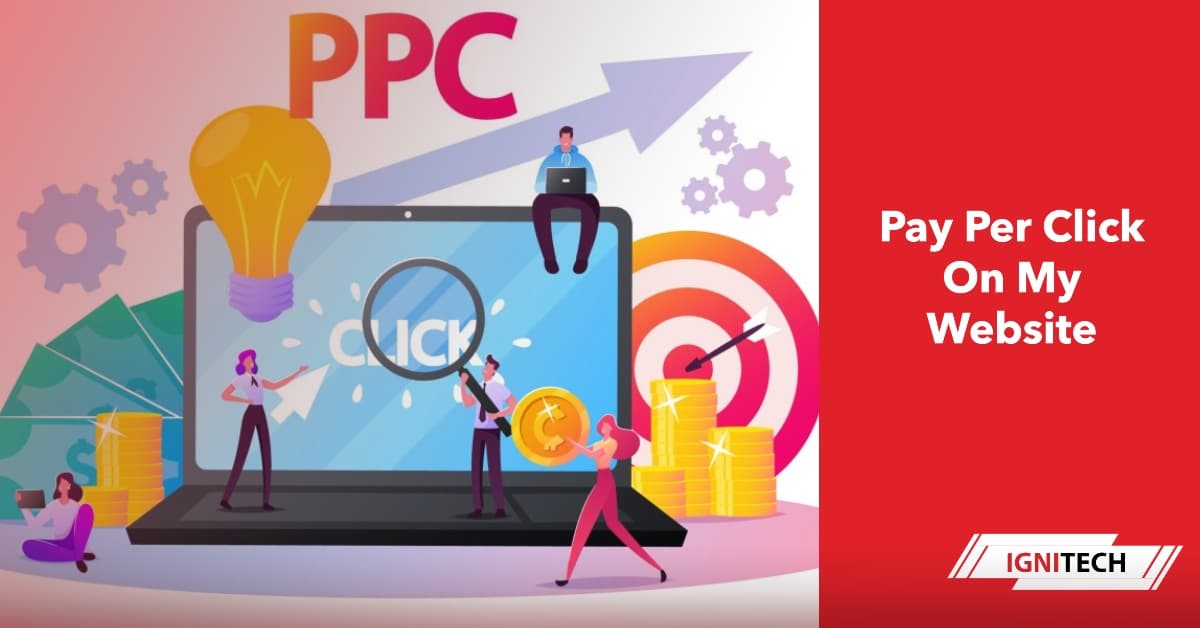Pay Per Click In Digital Marketing has become an invaluable tool for businesses looking to drive targeted traffic and boost conversions on their websites. With platforms like Google Ads, companies can leverage the power of Pay Per Click On My Website campaigns to reach their desired audience and achieve maximum returns on their marketing investments.
However, simply running a Pay Per Click On My Website campaign is not enough; to truly maximize conversions, you need to employ cutting-edge tricks and strategies that will set your campaigns apart from the competition. In this comprehensive guide, we’ll explore five game-changing techniques that will supercharge your Pay Per Click efforts and help you achieve unprecedented success.
1. Mastering Keyword Research and Targeting
Keyword research and targeting are the foundation of any successful Pay Per Click On My Website campaign. By identifying the most relevant and high-converting keywords for your business, you can ensure that your ads are displayed to users actively searching for your products or services.
Leverage Advanced Keyword Research Tools
Invest in advanced keyword research tools like Google Keyword Planner, SEMrush, or Ahrefs. These powerful platforms will provide you with valuable insights into search volumes, competition levels, and keyword trends, allowing you to make informed decisions about which keywords to target in your pay per click Search marketing campaigns.
Utilize Long-Tail Keywords
While broad, high-volume keywords may seem tempting, they often come with steep competition and higher costs per click. Instead, focus on long-tail keywords, which are more specific and often have lower competition, resulting in lower costs and higher conversion rates for your paid search marketing efforts.
Negative Keyword Targeting
Negative keyword targeting is an often-overlooked but crucial aspect of Pay Per Click On My Website campaigns. By identifying and excluding irrelevant or low-converting keywords from your campaigns, you can prevent your ads from being shown to unqualified traffic, thereby saving you money and improving your overall campaign performance.
2. Crafting Compelling Ad Copy

Your ad copy is the first impression potential customers will have of your business, and it can make or break the success of your Pay Per Click On My Website campaigns. Crafting compelling and attention-grabbing ad copy is an art form that requires a deep understanding of your target audience and their pain points.
Leverage Emotional Triggers
Tap into the emotional triggers that resonate with your target audience. Use power words and phrases that evoke a sense of urgency, exclusivity, or desire. This will increase the likelihood of users clicking on your ads and ultimately converting on your website through your Pay Per Click On My Website campaigns.
Highlight Unique Selling Propositions (USPs)
What sets your business apart from the competition? Clearly communicate your unique selling propositions (USPs) in your ad copy to capture the attention of users and differentiate yourself from competitors in your Pay Per Click On My Website efforts.
Include Calls-to-Action (CTAs)
A strong call-to-action (CTA) is essential for driving conversions from your Pay Per Click On My Website campaigns. Use action-oriented language that compels users to take the desired action, whether it’s making a purchase, signing up for a trial, or requesting more information.
3. Optimizing Landing Pages

Your landing pages are the final destination for users who click on your Pay Per Click On My Website ads. As such, they play a crucial role in converting those clicks into actual customers or leads.
Maintain Message Match
Ensure that your landing pages are consistent with the messaging and promises made in your ad copy for your Pay Per Click On My Website campaigns. This creates a seamless and cohesive user experience, increasing trust and reducing bounce rates.
Focus on User Experience
Optimize your landing pages for a seamless and user-friendly experience, which is essential for converting Pay Per Click On My Website traffic. This includes factors such as fast loading times, clear navigation, and a mobile-responsive design. The smoother the user experience, the higher the likelihood of conversion.
Use Persuasive Elements
Incorporate persuasive elements on your landing pages, such as testimonials, trust badges, and social proof. These elements can help build credibility and overcome objections, ultimately increasing conversion rates from your Pay Per Click On My Website campaigns.
4. Leveraging Remarketing Campaigns
Remarketing campaigns allow you to target users who have previously visited your website or engaged with your brand, increasing the chances of converting them into customers through your Pay Per Click On My Website efforts.
Implement Abandoned Cart Remarketing
Abandoned cart remarketing is a powerful strategy that targets users who have added items to their cart but failed to complete the purchase. By delivering targeted ads to these users through your Pay Per Click On My Website campaigns, you can remind them of their interest and potentially recover lost sales.
Leverage Google Analytics Audience Targeting
Google Analytics offers audience targeting options that allow you to create remarketing lists based on user behavior, such as pages visited, time spent on site, and more. Utilize these targeting options to deliver highly relevant ads to users who have shown interest in your products or services through your pay per click Search marketing campaigns.
Experiment with Dynamic Remarketing Ads
Dynamic remarketing ads allow you to display tailored ads featuring the specific products or services a user has previously viewed on your website. This personalized approach can significantly increase engagement and conversion rates from your Pay Per Click On My Website campaigns.
5. Continuous Optimization and Testing
The key to maximizing conversions from your Pay Per Click On My Website campaigns lies in continuous optimization and testing. By constantly analyzing your campaign performance and making data-driven adjustments, you can ensure that your campaigns remain effective and efficient.
A/B Test Ad Copy and Landing Pages
Regularly conduct A/B tests on your ad copy and landing pages to identify which variations perform better for your Pay Per Click On My Website campaigns. Test different headlines, descriptions, images, and CTAs to find the winning combinations that drive the highest conversion rates.
Monitor and Adjust Keyword Performance
Regularly review the performance of your targeted keywords and make adjustments as needed for your Pay Per Click On My Website campaigns. Pause or eliminate underperforming keywords, and allocate more budget to the high-converting ones.
Leverage Automated Bidding Strategies
Google Ads offers various automated bidding strategies, such as Target CPA (Cost Per Acquisition) and Maximize Conversions, which can help optimize your bids and improve campaign performance based on your desired objectives for your Pay Per Click On My Website efforts. These strategies can also help manage your pay per click cost on google more effectively.
Monitor and Optimize for SEO and PPC
While Pay Per Click On My Website campaigns are crucial for driving immediate traffic and conversions, it’s essential to optimize your website for both SEO and PPC. A well-rounded digital marketing strategy that combines organic search engine optimization (SEO) and Pay Per Click On My Website campaigns can yield better long-term results and a higher return on investment.
Mastering the art of Pay Per Click On My Website campaigns is a continuous journey that requires a combination of strategic planning, creative execution, and data-driven optimization. By implementing the cutting-edge tricks and strategies outlined in this guide, you’ll be well on your way to maximizing conversions and achieving unparalleled success in your digital marketing efforts through effective Pay Per Click On My Website campaigns.
Remember, the key to success lies in consistently monitoring and optimizing your campaigns, staying up-to-date with industry trends, and embracing a growth mindset that allows you to adapt and evolve with the ever-changing digital landscape for your Pay Per Click On My Website initiatives.
FAQs
To add pay-per-click (PPC) advertising to your website, you’ll need to sign up with a PPC platform like Google Ads. Once you’ve created your account, you can set up campaigns, create ad groups, and write compelling ad copy targeting relevant keywords related to your products or services. Your ads will then be displayed on search engine result pages or partner websites, and you’ll pay a fee every time someone clicks on your ad.
No, you cannot get paid directly for clicks on your website through PPC advertising. In a Pay Per Click On My Website campaign, you as the advertiser are paying the platform (e.g., Google Ads) a fee every time someone clicks on your ad and is directed to your website. The goal is to convert those clicks into customers or leads, generating revenue for your business.
As an advertiser running Pay Per Click On My Website campaigns, you don’t earn money per click. Instead, you pay a cost-per-click (CPC) fee to the advertising platform every time someone clicks on your ad. The CPC can vary widely depending on factors like your industry, keywords, competition, and bidding strategies. It’s important to optimize your campaigns to ensure a positive return on investment (ROI) by converting clicks into sales or leads.
While you cannot get paid directly for clicks on your website through PPC advertising, there are other ways to monetize your website, such as:
- Display advertising (e.g., Google AdSense)
- Affiliate marketing
- Sponsored content or native advertising
- Subscription models or membership fees
- Selling digital products or services
The monetization approach you choose will depend on your website’s content, audience, and business model.
Pay-per-click advertising can be highly profitable if executed correctly. However, it requires careful planning, keyword research, compelling ad copy, optimized landing pages, and continuous monitoring and optimization. By following the cutting-edge tricks and strategies outlined in this article, such as mastering keyword targeting, crafting compelling ads, optimizing landing pages, leveraging remarketing, and ongoing testing, you can maximize your chances of running profitable Pay Per Click On My Website campaigns.
 Anas is our go-to copywriter with a knack for crafting persuasive and high-converting eCommerce landing pages. His passion for words and understanding of consumer psychology helps turn visitors into loyal customers. When he's not refining his copy, Anas enjoys exploring the latest digital marketing trends and experimenting with new writing techniques. His blend of creativity and strategic thinking makes him an indispensable part of our energetic team.
Anas is our go-to copywriter with a knack for crafting persuasive and high-converting eCommerce landing pages. His passion for words and understanding of consumer psychology helps turn visitors into loyal customers. When he's not refining his copy, Anas enjoys exploring the latest digital marketing trends and experimenting with new writing techniques. His blend of creativity and strategic thinking makes him an indispensable part of our energetic team.












